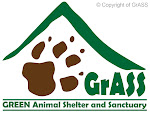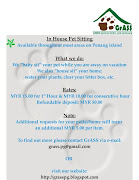Sunday August 23, 2009
EARLY one Sunday, Kuala Lumpur-based Dr Christopher Lim sets off on his monthly visit to his swiftlet farm in Ipoh, and we tag along.The farm is in a shoplot but has been carefully designed to avoid disturbing neighbouring shops and prevent theft. Entrances for the birds are so well concealed that passers-by have no idea a swiftlet farm is located on the uppermost floor.
 Passerbys would never realise there's a swiftlet farm on the upper floors of this shoplot as it has been so neatly and responsibly designed.
Passerbys would never realise there's a swiftlet farm on the upper floors of this shoplot as it has been so neatly and responsibly designed. The cacophony of chirping is deafening as we make our way through the dark interior. It's so humid, we're all instantly drenched in sweat. But the many swiftlets who call this their urban home find it comfortable enough to make nests, lay eggs, and raise their young.
Dr Lim checks the amount of faeces on the ground, which is a rough indicator of the number of birds that visited. And feathers are happy signs of mating rituals, he explains. He looks up at the many wooden beams neatly attached to the ceiling and smiles, for affixed to the beams are several white nests.
 Faeces on the floor is an indication of the number of swiftlets in residence.
Faeces on the floor is an indication of the number of swiftlets in residence. He clambers up a ladder and checks a nest to make sure there are no baby birds or eggs present (if there are, the nest is left alone). Then, using a paint scraper, he gently scrapes at its edges until he can pluck it off the beam.
We stare at the whitish nest with lots of tiny grey feathers sticking out. This tiny, hardened cup of bird saliva will fetch RM55 on the market or double that after processing (drying, cleaning, and removing the feathers manually).
"There are several grades of bird nests. A perfect concave, or cup-shaped, nest in a pleasing shape is Grade A," says Dr Lim.
Related Stories:Swift fortunes await
Are they really healthy?
Home sweet home
This article was taken from: The Star Online:Lifestyle: Focus 23 August 2009











































No comments:
Post a Comment